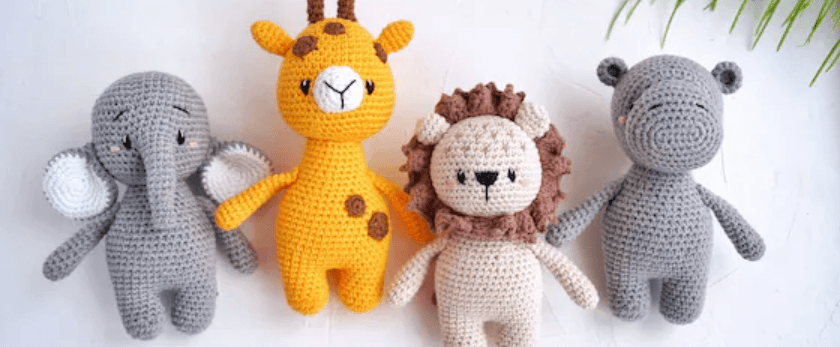Welcome to the world of homemade plush animals! These cuddly creatures are not only adorable, but they also have a positive impact on the environment. In this article, we'll explore why traditional plush animals are harmful to the planet and how making your own can be a more eco-friendly option. We'll also provide you with a step-by-step guide on how to make your own plush animals at home. So, let's get started!
The Environmental Impact of Traditional Plush Animals
You may not realize it, but traditional plush animals have a significant impact on the environment. Here are some reasons why:
1. Made from Non-Biodegradable Materials
Most plush animals are made from synthetic materials such as polyester, acrylic, and nylon. These materials are not biodegradable, meaning they cannot be broken down by natural processes. As a result, when these plush animals end up in landfills, they can take hundreds of years to decompose, releasing harmful chemicals into the environment.
2. Production Process
The production process of traditional plush animals also has a negative impact on the environment. The manufacturing of synthetic materials requires a significant amount of energy and resources, contributing to air and water pollution. Additionally, the transportation of these materials and finished products also adds to the carbon footprint of plush animals.
3. Disposal
When we no longer want or need our plush animals, we often throw them away. This leads to them ending up in landfills, where they take up space and contribute to pollution. Alternatively, some people may donate their plush animals, but if they are not in good condition, they may end up in the landfill anyway.
Why Making Your Own Plush Animals is Better for the Environment
Now that we've explored the negative impact of traditional plush animals, let's look at why making your own is a more eco-friendly option.
1. Use of Sustainable Materials
When you make your own plush animals, you have control over the materials you use. You can opt for sustainable and biodegradable materials such as organic cotton, bamboo, or hemp. These materials are better for the environment as they can be broken down naturally and do not release harmful chemicals.
2. Reduce Carbon Footprint
By making your own plush animals, you eliminate the need for transportation and the production process of traditional plush animals. This significantly reduces the carbon footprint of your plush animals, making them a more environmentally friendly option.
3. Reuse and Repurpose
When you make your own plush animals, you have the opportunity to reuse and repurpose materials. For example, you can use old t-shirts or fabric scraps to make the stuffing for your plush animals. This not only reduces waste but also gives new life to materials that would have otherwise ended up in the landfill.
What You'll Need to Make Your Own Plush Animals
Now that you know why making your own plush animals is better for the environment, let's look at what you'll need to get started.
- Sustainable and biodegradable materials such as organic cotton, bamboo, or hemp
- Fabric scissors
- Sewing machine or needle and thread
- Stuffing material (can be old t-shirts or fabric scraps)
- Embroidery thread or fabric markers for details
- Optional: patterns or templates for different animal shapes
Step-by-Step Guide to Making Your Own Plush Animals
Follow these simple steps to make your own plush animals at home:
Step 1: Choose Your Materials
As mentioned earlier, opt for sustainable and biodegradable materials for your plush animals. You can also repurpose old fabrics or clothing for your project.
Step 2: Create a Pattern
If you're making your own pattern, draw it on a piece of paper or cardboard. Alternatively, you can find free patterns and templates online for different animal shapes.
Step 3: Cut Out the Fabric
Using your pattern, cut out two pieces of fabric for each side of your plush animal. Make sure to leave a seam allowance of about 1/4 inch.
Step 4: Sew the Pieces Together
Place the two pieces of fabric together, with the right sides facing each other. Sew around the edges, leaving a small opening for stuffing.
Step 5: Stuff Your Plush Animal
Using your stuffing material, fill your plush animal through the opening. Make sure to stuff it evenly and not too tightly.
Step 6: Close the Opening
Once your plush animal is stuffed, sew the opening closed using a needle and thread.
Step 7: Add Details
Using embroidery thread or fabric markers, add details such as eyes, nose, and mouth to your plush animal.
Step 8: Enjoy Your Eco-Friendly Plush Animal
Congratulations, you've made your own plush animal! Not only is it adorable, but it's also better for the environment.
Responsible Disposal of Plush Animals
If you no longer want or need your homemade plush animal, there are responsible ways to dispose of it. You can donate it to a thrift store or charity, give it to a friend or family member, or even repurpose it into something else. By doing so, you prevent it from ending up in the landfill and contribute to a more sustainable future.
Conclusion
In conclusion, making your own plush animals is a fun and eco-friendly activity. By using sustainable materials and reducing your carbon footprint, you can make a positive impact on the environment. So, next time you're in need of a new plush animal, consider making your own instead of buying a traditional one. Your planet will thank you!










